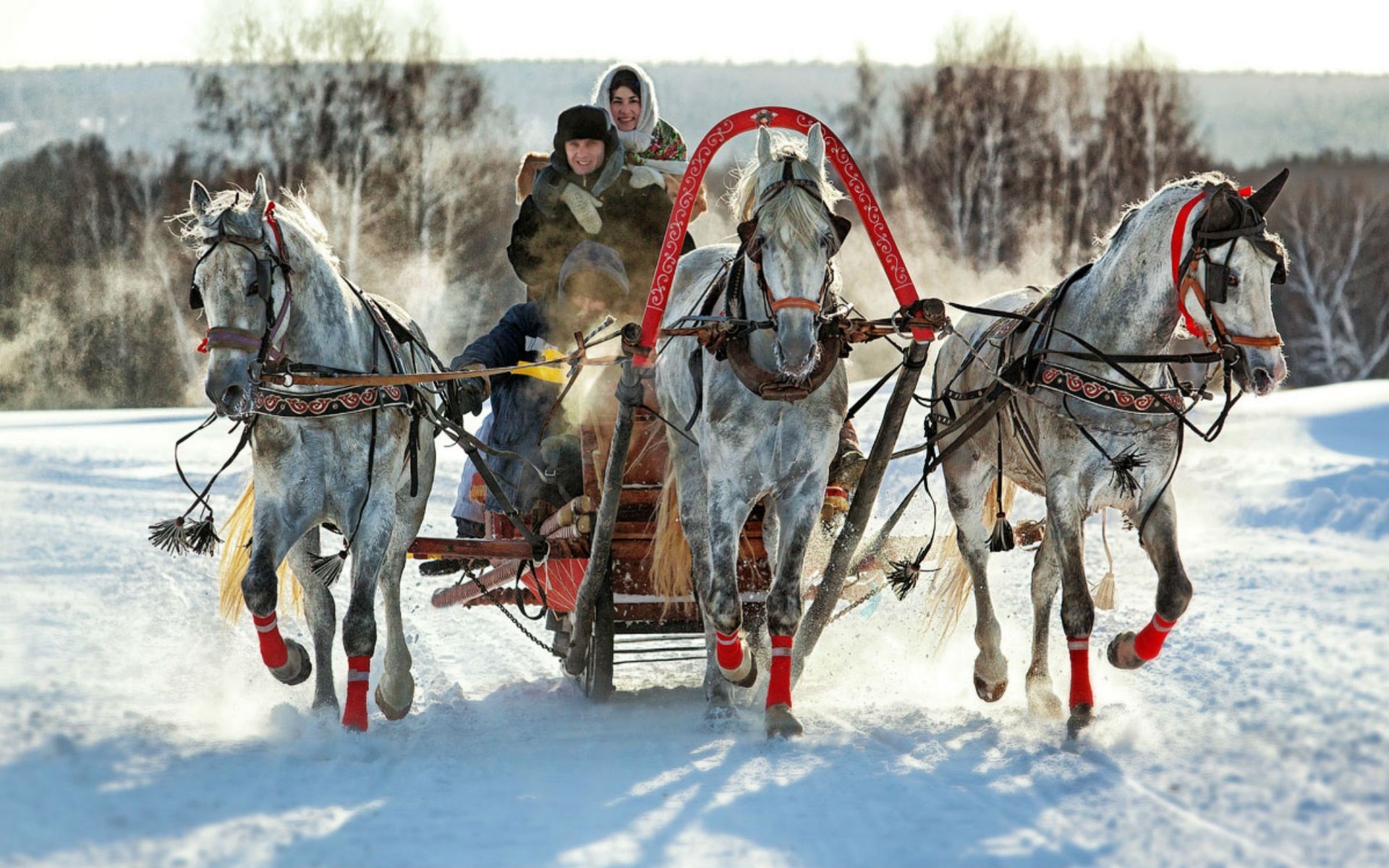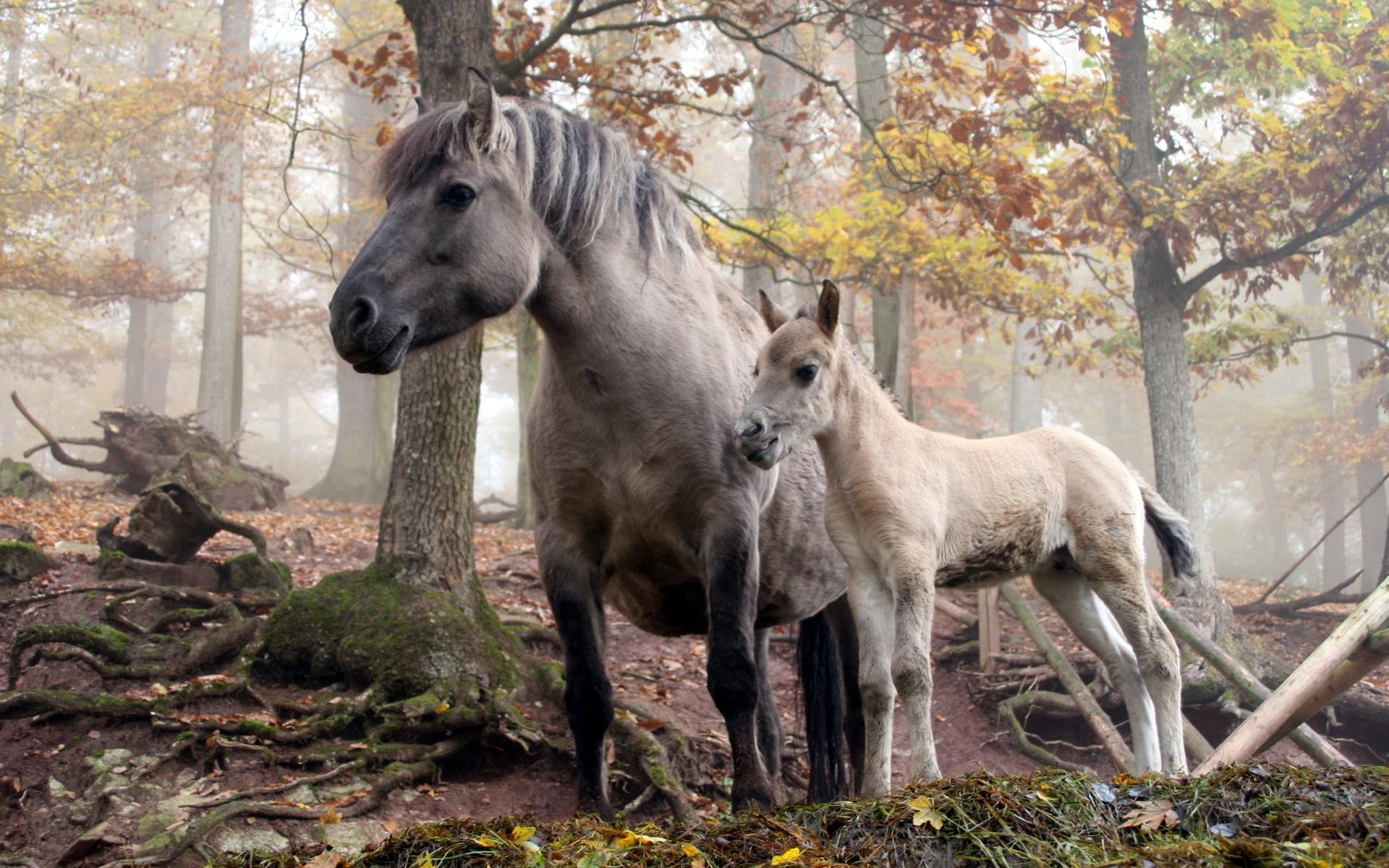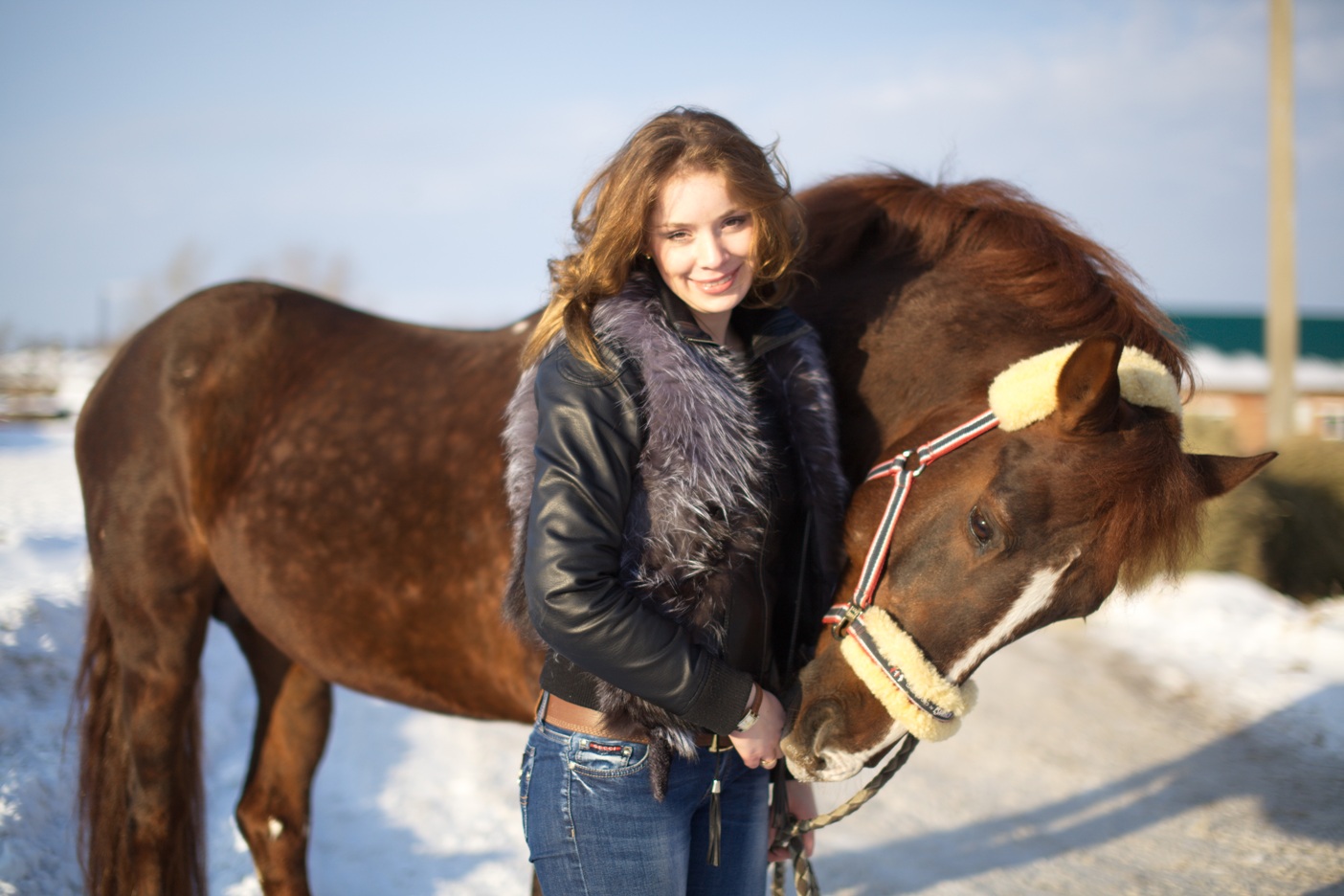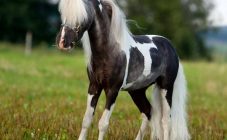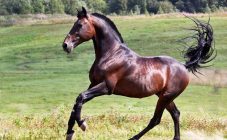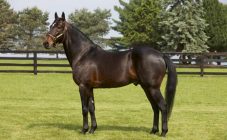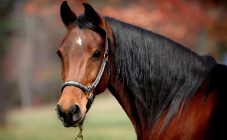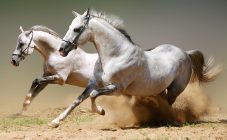Content:
In addition to great strength, horses are distinguished by gracefulness, speed and good learning ability. They can be found not only in villages for plowing fields and transporting goods, but also at competitions, in riding schools, circuses and other entertainment and sports establishments. There are about three hundred horse breeds in the world. They differ among themselves not only in external data, but also in the quality of performance of certain tasks.
All about horses: history, description
Looking far into the past, scientists have come to the conclusion that the first ancient ancestor of the horse was the eogippus. He inhabited the territory of today's America about 60-55 million years ago. The growth of this creature was no more than an average dog, and on the front and hind limbs, instead of hooves, there were 4 and 3 fingers, respectively.
There were three younger candidates for the role of ancestors of graceful horses: the kulan, the tarpan, and the Przewalski's horse. Through complex genetic analyzes and research, it has been proven that the kulan and Przewalski's horse, although they are relatives of the current horses, have nothing to do with them in terms of kinship. The offspring of today's mares and kulans could not reproduce, which proved the impossibility of such a relationship. Considering a number of factors, scientists have come to the conclusion that the only blood ancestor of today's horses can only be the old tarpan horse.
For the first time, wild horses were tamed on the territory of present-day Ukraine and Kazakhstan. It happened about 6 thousand years ago. Since then, the owners have chosen the strongest, fastest and most flexible individuals for their further reproduction and distribution. At that time, horses were the constant companions of their masters on campaigns, drives and migrations.
Through very complex genetic experiments and research, it was possible to find out the horse breeds from which modern horses originated. These were:
- Arabian purebred, originally from the Arabian Peninsula.
- Turkmen - originally from Central Asia.
Breeds and characteristics of horses
There is no single correct classification that can be applied to all horses without exception. Since the days of the Soviet Union, they were divided into local and factory ones.
Locals are called individuals that grew and developed in conditions close to natural (domestic horse). They are excellent helpers in the household and perfectly adapt to the climatic conditions of the area in which they take root. These animals are divided into:
- Forest. A striking representative of the species is the Yakut horse. It is perfectly adapted to the harsh climate, as evidenced by its warm, thick fur and short stature. It can work both under the saddle and in harness. The meat of the Yakut horse is distinguished by its wonderful taste, and warm, comfortable things are sewn from its skin.
- Mountain.Among the horses living in mountainous areas, the Kazakh variety is the most widespread. What do horses of this breed look like? They are not high, perfectly adapted to the movement in the mountains and the corresponding loads. They are able to perform well both under the saddle and pack, and in harness.
- Stepnykh. The two most common types of horses in the steppe areas are adai and jabe. Adaev is a light, obedient riding horse, distinguished by endurance when riding long distances. Jabe, on the other hand, has a compact, muscular body. His forte is the transportation of goods, although he looks like a small pony.
Factory (work horses) - horses that were bred in artificial conditions created by man. They have a great craving for work and are divided into:
- heavy-duty;
- harness;
- riding and harnessing;
- riding.
Where do wild horses live
Currently, there are almost no herds of free horses in the wild. They are massively domesticated and tamed. Now there are only a few horse breeds around the world that belong to wild species:
- Przewalski's horse (Mongolia);
- tarpan (Russia);
- bramby, mustang (Australia, North America);
- island ponies (North America);
- Camargue (France);
- swamp ponies (Britain).
In the wild, a horse's diet consists of what it can find for itself. Young working horses or sporting horses require an individually designed diet, which is selected by specially trained professionals, taking into account the preferences of the animal and the vitamins and minerals necessary for it.
Horse breeding
A mare is a female of the equine family. An old horse is unable to bear healthy offspring.
There are 4 stages that a mare needs to go through so that she has a healthy foal:
- training;
- mating;
- pregnancy;
- childbirth.
During the preparation of females for mating, a number of features are taken into account: natural and climatic factors, the length of daylight hours, the predisposition of the mare to cage, the specificity of its breed, the influence of age, season, etc. Ovulation occurs 1-2 days before the end of the hunt.
If the mare is kept separately or they plan to carry out artificial insemination, then they make a diagnosis of the female's arousal. Usually ponies or males with vasectomies are used for this. The male and female are placed in adjacent pens and the behavior of the mare is observed. If she is on the hunt, her closeness with the horse is observed, the pulsation of the anus muscles, she allows him to sniff her genitals, the clitoris increases. Often, she can even assume a posture typical for mating.
If mating is necessary, but the mare is not in the hunt, drug stimulation is performed.
Pregnancy, or fertility, is the process of bearing a fetus. It lasts up to 350 days. The duration of bearing a foal depends on the breed of the expectant mother. The process of embryo formation goes something like this:
- The first few days are the cleavage of the fertilized egg.
- 15-17 days - attachment of the embryo to the uterus, the formation of sheets, which are responsible for the formation of tissues and organs.
- 40 days - the beginning of the formation of eyes, mouth, legs, the growth rate accelerates.
- 45 days - you can determine the sex of the foal.
- 320 days - the development and formation of the fetus is almost complete.
The final stage of pregnancy is childbirth. The algorithm of actions during childbirth is as follows:
- Training.As in humans, the beginning of labor in a mare is determined by the opening of the cervix. At this time, the horse lies on its side and begins to push (foal). The process of giving birth to a cub is accompanied by fidgeting of a mare on the ground, sharp, strong flapping of the tail and jerking of legs.
- Fruit yield. This process is accompanied by contraction of the muscles of the horse's abdomen and pushing. Muscle activity comes in waves. If the horse kicks too much during pushing, it is necessary to carefully hold its legs so as not to scare the animal. The fetal bladder is white with a slight shade of blue. Usually it bursts on its own, but if this does not happen, they help the giving birth by breaking the bubble and freeing the foal's nose of mucus. The umbilical cord breaks either at the moment the baby leaves the mother, or when the mare rises to her feet after giving birth. If suddenly the umbilical cord does not break, it is tied with strong threads, at a distance of 2-3 cm from the abdomen, and cut off with scissors or a knife, disinfected before this solution of iodine 5%.
- Separation of the placenta. It occurs within an hour after foaling, and it is immediately carried away from the pen. If, after two hours after giving birth, nothing came of it, they urgently turn to specialists.
- Postpartum stage. When the hardest part is over, the foal is wiped off with a dry, clean cloth so that it is tall as soon as possible. The udder and tail are washed with warm water, the litter is changed to a clean one. Then, for three hours, they simply observe whether everything is in order.
What is the most important thing in horse care
So that the pet does not get sick and looks beautiful and well-groomed, it is enough to follow a few basic rules:
- The first and most important condition for the healthy functioning of the animal's body is an individually selected diet, depending on the preferences of the horse, and adherence to the diet. For each horse, specially trained grooms, after a thorough examination of the individual, select the best feeding option, the result of which will be noticeable in a few days. In no case should you give the horse anything to eat and save on feed and vitamins.
- Meals should always be served at certain times. The animal should have breakfast no later than 8 am, lunch - about 1 pm, dinner - no later than 22:00.
- Before breakfast and before bedtime, the horses should be examined for injuries, dust removed and thoroughly brushed.
- To prevent dehydration, the horse must be watered after each training session.
- Every time the animal is not in the stable, its personal place must be removed.
Interesting facts about horses
It will be interesting for beginners and experienced horse breeders to know:
- The only horse breed that has never been tamed is the Asiatic Wild.
- The horse skeleton of Napoleon Marengo has been one of the main exhibits of the London Museum for several years.
- Horse long-liver is Billy's horse from England: he lived 62 years (173.5 human years).
- Horses feel nervous and anxious when they smell blood.
- Horses' eyes can move independently of each other.
- Utah law prohibits unmarried women from riding on Sundays.
Horses can have a beneficial effect on the mental health and well-being of those around them. You cannot reread interesting and amazing stories about these noble animals. They are firmly connected with the fate of all mankind and can become truly loyal friends.
